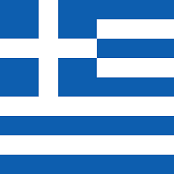Α research article of the Group of Theoretical and Computational Physics of Xanthippi Zianni at the Department of Aerospace Science and Technology of the School of Science of NKUA has been published as an Advance Article by the scientific journal Nanoscale of the Royal Society of Chemistry (RSC) and features on the front cover of issue No41 of the journal with an artwork image of the Head of the Group.

ARTICLE INFORMATION
Title: A physics rule to design aperiodic width-modulated waveguides for minimum phonon transmission with Bayesian optimization
Authors: Antonios-Dimitrios Stefanou and Xanthippi Zianni
Antonios-Dimitrios Stefanou is a Ph.D. student of the Department of Aerospace Science and Technology of the School of Science of NKUA.
Xanthippi Zianni of Professor of Physics at the Department of Aerospace Science and Technology of the School of Science of NKUA.
Publication of the artwork on the front cover of Nanoscale has been supported by the School of Science of NKUA.
BRIEF DESCRIPTION OF RESEARCH
Width-modulated waveguides belong to the class of artificial material structures with properties controlled by their geometry, the so-called metamaterials. Metamaterials have revolutionized many fields of modern technology such as photonics, acoustics, sensing, etc. They could also work for thermoelectrics. The enhancement of thermoelectric efficiency using thermocouples, which are solid-state heat engines, has been the subject of intensive research for several decades. Research efforts to increase the poor efficiency of traditional thermoelectric materials with nanocomposite materials and nanostructures have not been adequately successful. The development of efficient thermoelectric applications is restricted by the inadequate control of interconnected electrical and thermal transport properties of nanostructures. Increasing the thermoelectric efficiency is still a timely and crucial task because if accomplished it would greatly benefit the current needs of our society for energy production and advanced nanoelectronics applications. In 2010, the use of metamaterials was proposed as an alternative strategy. One of the authors demonstrated theoretically that the transport properties of width-modulated nanowaveguides are strongly dependent on their modulation profile and that efficient thermoelectric nanowaveguides could emerge by appropriately designing their modulation profile. Such structures could ideally power the Internet of Things, provide on-chip refrigeration, and deal with overheating of nanodevices.
Nature teaches us how to design artificial structures with optimal properties. Characteristic examples are living organisms such as butterflies which have different bright colours due to geometry modulations on their wings that have inspired the fabrication of efficient photonic metamaterials. The interplay between order and disorder is a valuable tool for designing advanced metamaterials. In an earlier study, a member of the group pointed out the major role of disorder in the modulation profile of thermoelectric metamaterials. Aperiodic width-modulated nano-waveguides could block parasitic heat conduction that restricts heat management and energy conversion at the nanoscale. Aperiodicity can be realized in multiple ways and with variable degrees of complexity. Optimizing aperiodic geometry modulation is particularly challenging due to the enormous possible configurations. In the featured work, a feasible optimization problem was set removing unnecessary complexity, and efficient Bayesian optimization is demonstrated. The results confirm that minimum thermal conduction occurs for the most disordered arrays of modulation units; the degree of disorder being quantified by the number of non-identical modulation units. This result although expected by physics intuition is not trivial as shown by comparison with related scientific literature. The validated physics rule opens a route to design geometrical aperiodicity and control transmission across metamaterials.








 The session has ended for security reasons.
The session has ended for security reasons.